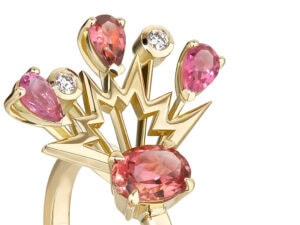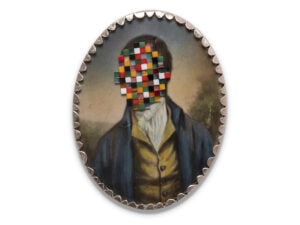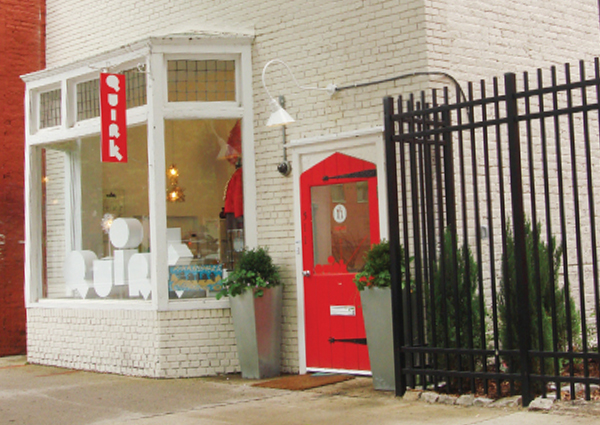
Susan Cummins: Tell me the story of how Quirk Gallery got started.
Maggie Smith: Katie Ukrop opened Quirk in 2005 in an upcoming section of Richmond’s downtown area. There were a few galleries already located in our neighborhood. The area has continued to grow and recently became recognized as the Richmond’s Arts & Culture District. I joined Katie and the Quirk gang in 2007. Being a Richmond native I have felt very lucky to be a part of the cultural growth that is happening in our city.
Can you describe your space?
Quirk is a unique space in that we have three designated exhibition areas, as well as a shop and Quirk Represents. Quirk Represents is an area reserved specifically for art jewelry. Our exhibition areas are The Shop Wall, The Main Gallery and The Vault. Throughout the year we show jewelry in all three spaces. The Vault is tiny little brick room with a lovely weathered fire door. There are several stories as to what the Vault used to be. My personal favorite is that it stored hops during the building’s brewery days.
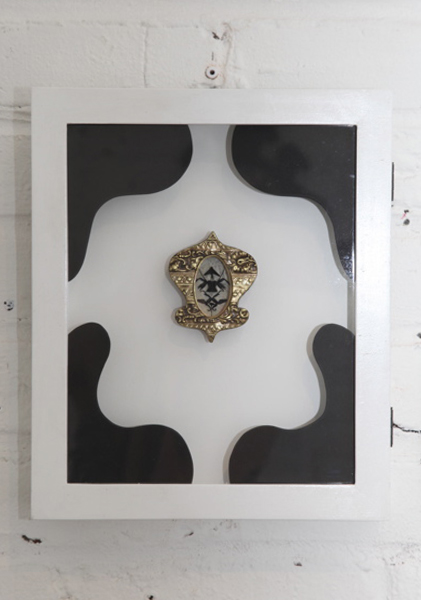
Within our three spaces we hold a total of 30 exhibits a year. Our shows range from themed group exhibitions to solo shows. We show fine craft, sculpture, paintings and we have a fondness for art jewelry. Our curatorial activities follow our flights of fancy. Our main goal is to bring quality art and craft for all to enjoy. We always have our feelers out for work that we think is right for us.
Virginia Commonwealth University (VCU) is near you and I am wondering if you coordinate with their jewelry department in some way.
With VCU literally a few blocks away we have many wonderful opportunities to work with the Craft & Material Studies department. The last three years we have collaborated with the metals students to hold a sale of their work. The first year, proceeds went to the Red Cross to aid victims of the earthquake in Haiti. In 2011 and 2012, the proceeds have gone towards helping students to attend the SNAG conference. Having VCU so close is really wonderful. I feel like I learn so much from the students who come in – not to mention the valuable working relationships we have built with artists we have met through the university.
How would you describe your clients?
Quirk is really lucky to have a wide variety of folks walk through our doors. We have collectors, students, artists, neighborhood friends and people traveling through Richmond. When someone discovers Quirk Represents, our art jewelry collection, for the first time it is really wonderful to see their reactions. Also when a collector comes in it is nice to talk about the work and what they have seen or are interested in. We really appreciate the ability to reach such a wide audience.
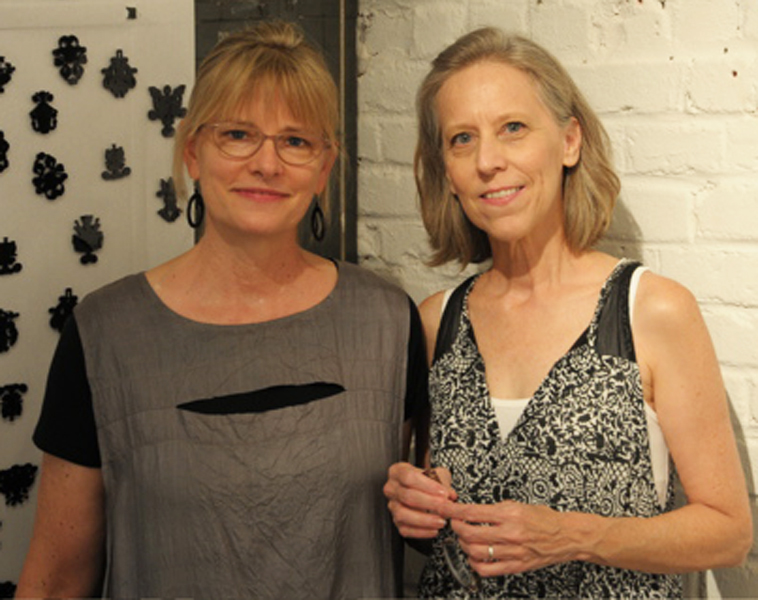
Kim Overstreet & Robin Kranitzky: We became friends back in the mid 1980s when we both worked at (the now defunct) Miller & Rhoads Department store where Kim was in the advertising department and Robin worked in window display. For Robin, it was a great opportunity because the job entailed building props and having the availability of a variety of materials at her fingertips. She has always believed that the fashion industry is so quirky and inspirational and definitely shows people how to think outside of the box. The people that Robin had the pleasure to work with (including her husband) were amazing. It was a theatrical experience and exciting to develop environments for mannequins that were painted, tattooed or morphed into something other than a stiff form. There were stories in those windows, whether a nativity scene in all its glory or a dark forest where faces of the mannequins became rabbit masks.
Robin eventually joined Kim in the advertising department where pasting illustrations and words in two-dimensional boxes was the daily routine. But here we had time to share ideas about our mutual interest in ceramics and conspire about jewelry. It was the time of early Madonna when the look of big hair, big brooches and lots of jewelry was in vogue. We were inspired to get together after hours to create jewelry out of anything we could find. Much of the junk we started with was from Robin’s Dad’s shop, a cluttered little shed behind the house she grew up in. Her Dad allowed us to rummage through the old boxes and drawers and take what we wanted. We were so intrigued by everything: a beat up toolbox with some mangled wire screen, a few old tools, assorted nails, rusty thingamabobs and bits of this and that.
Soon we found ourselves going through drawers and attics, then to junk shops and yard sales. Before we knew it people were giving us their old broken jewelry and other baubles they no longer wanted. But we would be far more interested in things that were not jewelry . . . a piece of a cigarette lighter, brass strips from old frames, cracker jack charms, buttons, broken watches, old paper and postcards. Even water stained wallpaper found behind a radiator inspired us! This initial endeavor had a purpose, for us to buy a small kiln. At this time, since we were both dabbling in ceramics, Kim creating figures and ceramic jewelry and Robin making ceramic figures and pots, our thought was to make and sell jewelry from all this newly acquired junk, to create funds to buy a kiln, in order to make more ceramics and then be on our way! But of course that never happened.
We continued making our found object jewelry, which became very sought-after and eventually matured into our current narrative works. The whole idea of turning junk into jewelry became the impetus for our partnership and was the title to the first article written about our work, in 1985 in the local paper. All these years of working together was based on that original friendship. It all started with a friendship of two distinct personalities with respect, shared responsibility and the love of a good idea.
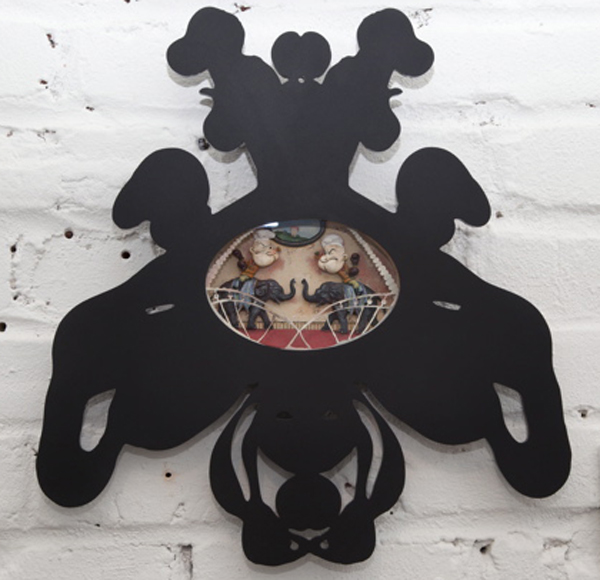
Kim Overstreet & Robin Kranitzky: Actually, in the beginning of our jewelry making, our focus was on the assembling of unlike materials and objects and discovering efficient and acceptable ways to get all the pieces and parts to stay together. Gradually, themes began to evolve, themes such as holiday, Egyptian, time, animals or sports. Development continued and over time the pieces grew more complex and matured into the narrative scenes.
We have always been interested in visiting our local art museum, the Virginia Museum of Fine Arts. Viewing the Faberge collection of objects and jewelry, examining the elaborate eggs with all their color, detail and movable parts was – and continues to be – inspiring to us. We have absorbed the incredible craftsmanship and attention to detail, as well as the stories and photos of the family members, their pets and the historical references. The museum’s African arts collection, with its history of jewelry and accessories used in rituals, in healing and in sacred ceremonies, is abundant with inspiration. The symbols embellishing Egyptian jewelry, referencing stories of mummification and the gilded objects that would accompany the dead to their afterlife, had an impact on our thoughts as well.
Over the years we have discovered a great deal of jewelry from the past which holds stories through symbolism and metaphor, such as the beautifully designed chatelaines worn by women in the eighteenth century with their many hanging components revealing stories of meaning and purpose, the crucifix worn by Priests, the charms, vials and reliquaries of the saints worn as pendants holding everlasting details about the deceased and mourning jewelry telling stories of departed loved ones.
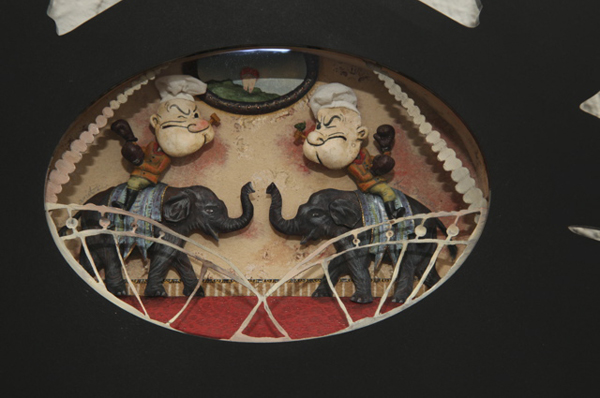
Kim Overstreet & Robin Kranitzky: This statement explains our thoughts behind the show: ‘It should not be hard for you to stop sometimes and look into the stains of walls, or ashes of a fire, or clouds, or mud or like places, in which . . . you may find marvelous ideas.’ Leonardo da Vinci
We have always been fascinated by Rorschach patterns and the idea of pareidolia, inkblot ideas have been in our sketchbook for years. The idea of seeing something where there is nothing is fascinating and can be inspiring to the imagination. Certainly everyone can relate to lying in the grass and finding shapes in the clouds. Our signature work involves storytelling through 3-D collage in miniature, in the form of a brooch. These mini stories are generally conjured up by the two of us and are inspired by personal struggles, news stories, nature, science, religion, etc. For this Vault project we decided to ask others to suggest a story and for their inspiration we focused on the Rorschach idea. It occurred to us that it would be fun to make our own inkblots, so from about fifty we narrowed it down to five. Friends and family were shown one inkblot pattern out of the five and were invited to describe what they saw in the pattern. We had some wild results. From all the interpretations we received, we selected one as inspiration for the interior scenes of each of the five wall sculptures. They are all presented here, unedited, on the walls for you to read. The five original blots were enlarged and laser cut from sheet acrylic, with a central area open as a window for our interpretive story. This project was a collaboration of many minds and their thoughts about a blot of nothing . . . which brings us back to the word pareidolia, a random stimulus being perceived as significant.
Can you give us an example or two of the stories represented by the brooches?
Kim Overstreet & Robin Kranitzky: The brooches Symmetry #1, Symmetry #2 and Symmetry #3 were made in 2011 during the infancy of the Rorschach project. These three brooches in the exhibit are all similar in execution, constructed from found materials assembled to form an intentional symmetrical design reminiscent of an inkblot. All parts used in this inkblot design were painted black to illustrate that idea further. These were more of an exercise and stimulus for the larger wall pieces and, although they don’t tell a specific story, just like Rorschach blots, they form patterns that can be interpreted.
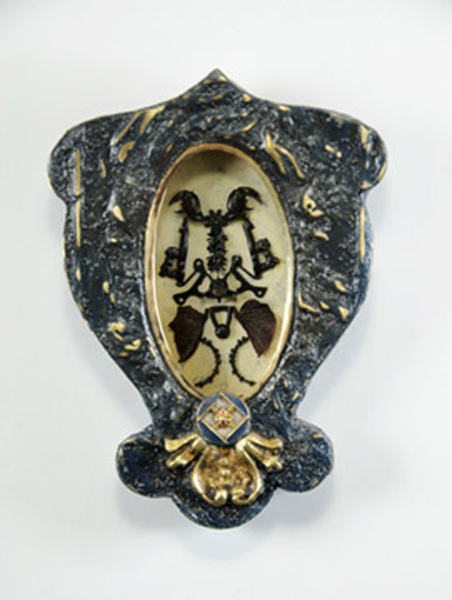
You have done both jewelry and wall sculptures in this exhibit. Is this the first time you combine both forms? Why did you choose to do this?
Kim Overstreet & Robin Kranitzky: In the past we have created larger freestanding structures to accompany the brooches. The larger sculptural format provides us the opportunity to work without regard to size or weight, which is usually a consideration when designing a piece of jewelry. In those cases, the structures are very much a part of the composition but also have a function to house and display the brooch. The wall sculptures in our Vault project don’t have that function.
It was important to include the brooches in this exhibit because they were the motivation for the larger wall pieces. While working on these three inkblot inspired brooches, we began to think, ‘wouldn’t it be interesting to get others to come up with the ideas for us?’ As we have always welcomed others to gain their own insight to our narratives, it seemed like a good idea to reverse our normal process. We were thrilled to receive over 100 replies to our inkblot request. The question that always pops up to any artist is ‘where do you get your ideas?’ This time the answer is simple: from people who chose to respond to an inkblot. Incidentally, this is the first time we have shown brooches and separate sculpture simultaneously in a formal setting.
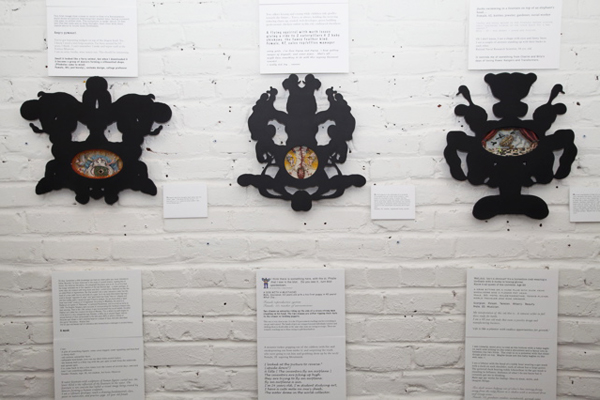
Kim Overstreet & Robin Kranitzky: Sometimes a single found object becomes the inspiration or the story may be inspired by something happening in the news, a spiritual ritual, emotions, dreams, political issues or whatever is occurring in our own personal lives. Through commission work our stories have been based on poems, books or a person’s character. In group exhibitions where there is a particular title or theme, then that title or theme would be the starting point for conjuring up our narratives. For this Vault project the stories came from peoples’ response to a particular inkblot.
Since you are so interested in story telling can you recommend a few books or authors who you are especially fond of?
Robin: Codex Serifinianus, one of my favorite all time. Joseph Campbell, highly recommend. Shakti Gawain, highly recommend.
Kim: I love to read and have a list of books a mile long that I want to get to but as it happens I usually read whatever comes my way. A wonderful story that kept me in another place and time throughout the entire book was Pillars of the Earth by Ken Follett. Not long ago I was looking for something to read and came across Two Years Before the Mast by R H Dana Jr. I realize it’s a classic but I had never read it and honestly it always sounded boring to me, but oh boy, that story kept me spellbound throughout! I love mysteries and keep a set of Sherlock Holmes stories by Arthur Conan Doyle on my iPod, which I really enjoy. There are two storytelling podcasts I never miss, Selected Shorts and The Moth.



